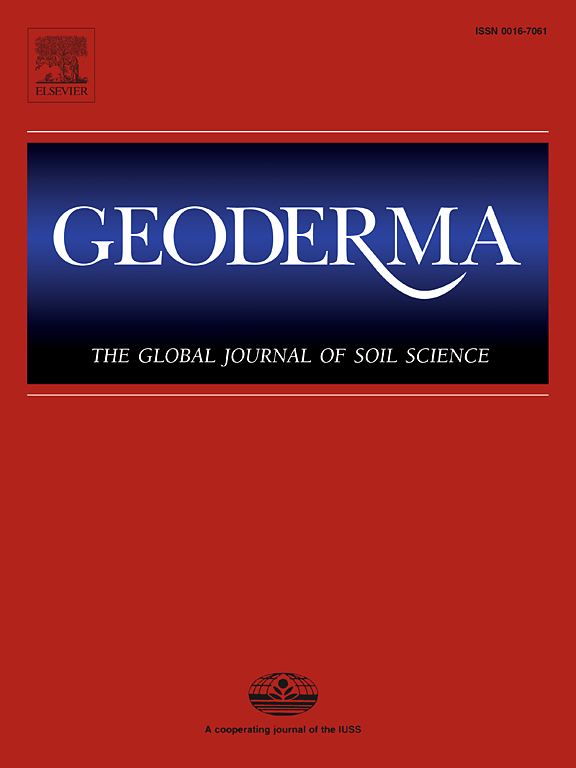The molecular composition of soil organic matter is regulated by bacterial community under biochar application
IF 5.6
1区 农林科学
Q1 SOIL SCIENCE
引用次数: 0
Abstract
Soil organic matter (SOM) consists of diverse carbon compounds, which are influenced by microorganisms that affect its turnover and stability. However, changes in SOM molecular composition following biochar application and their interactions with the soil bacterial communities remain poorly understood. We aimed to evaluate SOM molecular composition, soil bacterial communities, and carbon cycle functional genes of bacteria in soils treated with biochar using pyrolysis–gas chromatography-mass spectrometry (py-GC/MS) and amplicon sequencing. The py-GC/MS results indicated that biochar increased the molecular diversity and significantly altered the molecular composition of SOM. In biochar-treated soils, the abundance of lignin-derived products increases, while lipids levels decrease. Biochar application shifted the soil bacterial life-history strategy towards copiotrophy, characterised by a higher copiotroph/oligotroph ratio and ribosomal RNA operon copy number. Procrustes analysis revealed that SOM molecular composition was strongly correlated with both the bacterial community and carbon cycle functional genes. Specifically, the SOM composition was closely associated with Gammaproteobacteria, Acidobacteria, and Chloroflexi. Additionally, SOM network analysis indicated that biochar enhanced SOM molecular complexity (i.e., node count, edge count, and average degree) primarily due to the accumulation of lignin-derived products. These findings highlight the potential of biochar to reshape the molecular composition of SOM via microbially mediated processes.

施用生物炭后,土壤有机质的分子组成受细菌群落的调节
土壤有机质(SOM)由多种碳化合物组成,受微生物影响,影响其周转和稳定性。然而,施用生物炭后SOM分子组成的变化及其与土壤细菌群落的相互作用仍然知之甚少。利用热解-气相色谱-质谱联用技术(py-GC/MS)和扩增子测序技术,研究生物炭处理土壤中SOM分子组成、土壤细菌群落和细菌碳循环功能基因。py-GC/MS结果表明,生物炭增加了SOM的分子多样性,显著改变了SOM的分子组成。在生物炭处理的土壤中,木质素衍生产品的丰度增加,而脂质水平降低。生物炭的应用使土壤细菌的生活史策略转向了共生营养,其特征是更高的共生营养/寡营养比例和核糖体RNA操纵子拷贝数。Procrustes分析表明,SOM分子组成与细菌群落和碳循环功能基因密切相关。具体来说,SOM的组成与γ变形菌、酸杆菌和氯氟菌密切相关。此外,SOM网络分析表明,生物炭提高了SOM分子复杂性(即节点数、边数和平均度),主要是由于木质素衍生产物的积累。这些发现强调了生物炭通过微生物介导的过程重塑SOM分子组成的潜力。
本文章由计算机程序翻译,如有差异,请以英文原文为准。
求助全文
约1分钟内获得全文
求助全文
来源期刊

Geoderma
农林科学-土壤科学
CiteScore
11.80
自引率
6.60%
发文量
597
审稿时长
58 days
期刊介绍:
Geoderma - the global journal of soil science - welcomes authors, readers and soil research from all parts of the world, encourages worldwide soil studies, and embraces all aspects of soil science and its associated pedagogy. The journal particularly welcomes interdisciplinary work focusing on dynamic soil processes and functions across space and time.
 求助内容:
求助内容: 应助结果提醒方式:
应助结果提醒方式:


